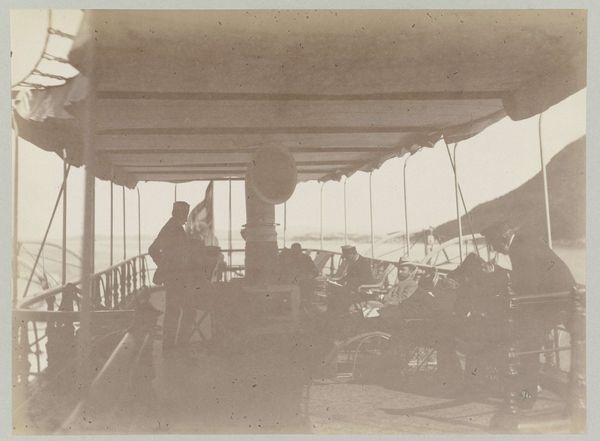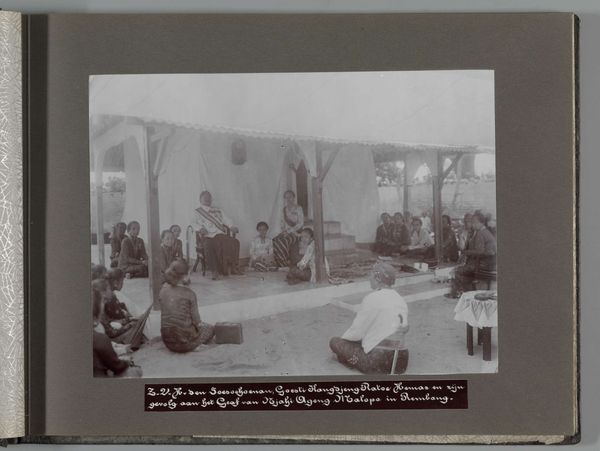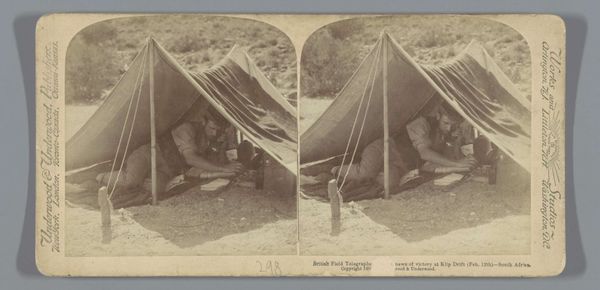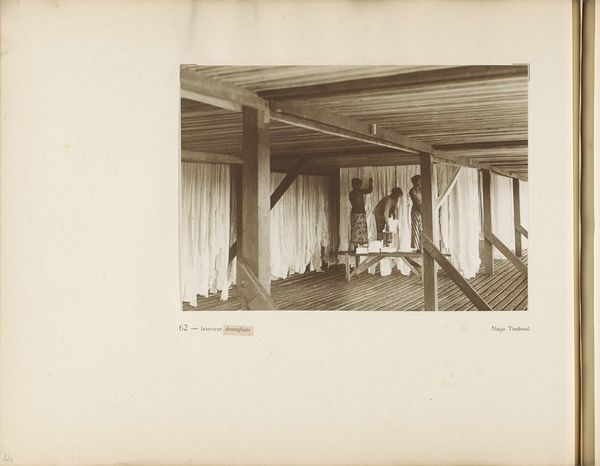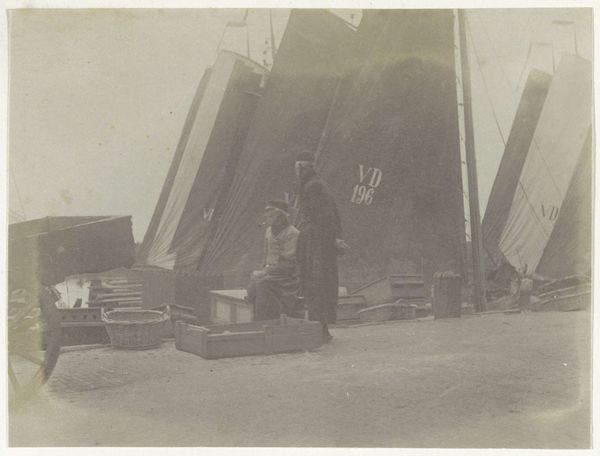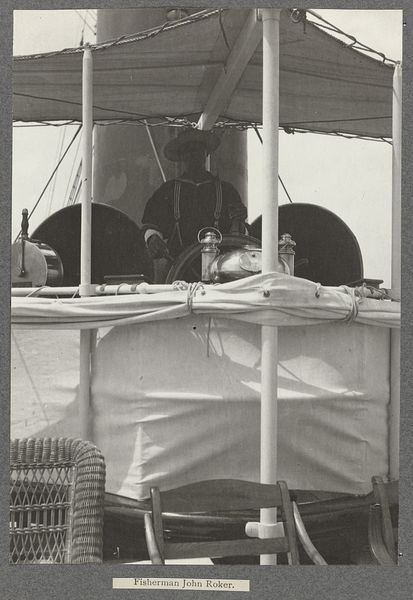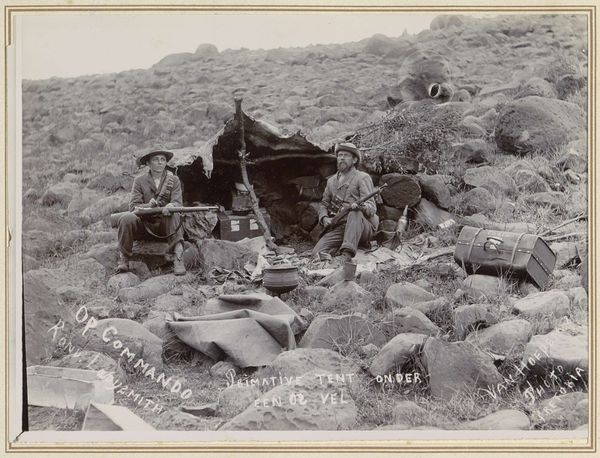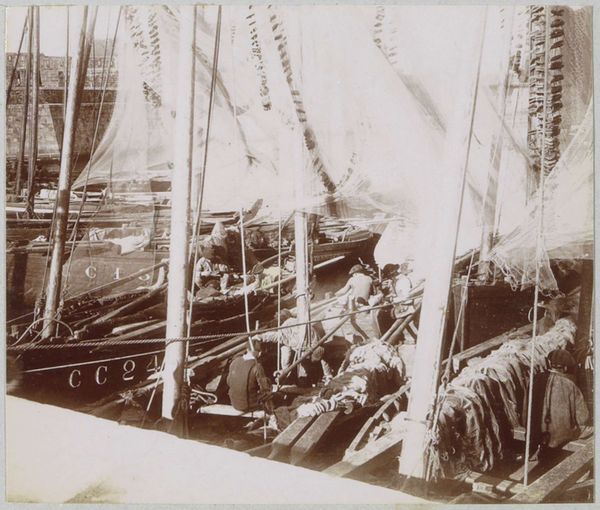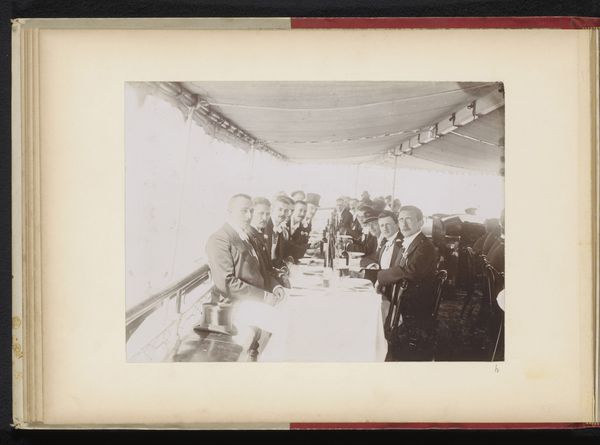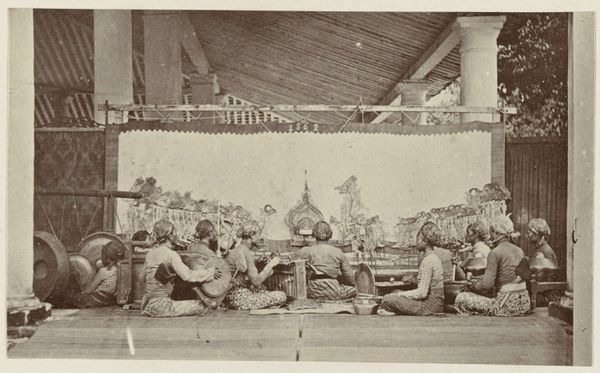
photography
#
portrait
#
charcoal drawing
#
street-photography
#
photography
#
genre-painting
#
realism
Dimensions: height 120 mm, width 167 mm
Copyright: Rijks Museum: Open Domain
Curator: What strikes me immediately is the monochrome palette—the grays and whites create a feeling of quiet exhaustion. The composition, too, with the figures huddled together, amplifies this somber tone. Editor: Indeed. This photograph, titled "Passengers Sleeping on the Deck of a K.V. Ship", taken in 1891 by Gomez Burke, captures a powerful image of human vulnerability during travel. Its realistic style situates it firmly within the socio-political contexts of maritime voyages in that era, doesn’t it? Curator: Absolutely. This is more than a snapshot of sleep; it’s a record of bodies confined and weary. Consider how it portrays a specific type of journey, likely reflecting colonial routes. The weariness in their posture is palpable, the arrangement, a stark reality of social inequality, wouldn't you agree? Editor: The photograph’s texture and tonal range, the variations from soft shadow to nearly-blinding whiteness, definitely add to the raw intimacy. We're peering in, yes, but at what distance? Are we observers, intruders, recorders? Burke forces us to ask. Curator: I find myself contemplating the visual impact of how the subjects are sprawled. The textiles they’re lying on, their attire... These speak volumes about class, origin, and circumstance. The suitcases become more than just luggage. They tell the tale of cultural exchanges and the impact of these interactions during these times. Editor: I agree completely; they're visual shorthand for larger themes of societal disparity and historical oppression. Note the lighting. How does that indirect sun impact our viewing experience? I find this an extremely poignant observation from this photograph and believe the work transcends purely visual experience. Curator: It compels us to reflect critically on the human cost of travel and perhaps confront the complex history of these passengers. Editor: I'm struck by how technique is deployed here, that visual language creating new dialogues. Thanks for providing a deeper and richer interpretation of it.
Comments
No comments
Be the first to comment and join the conversation on the ultimate creative platform.
